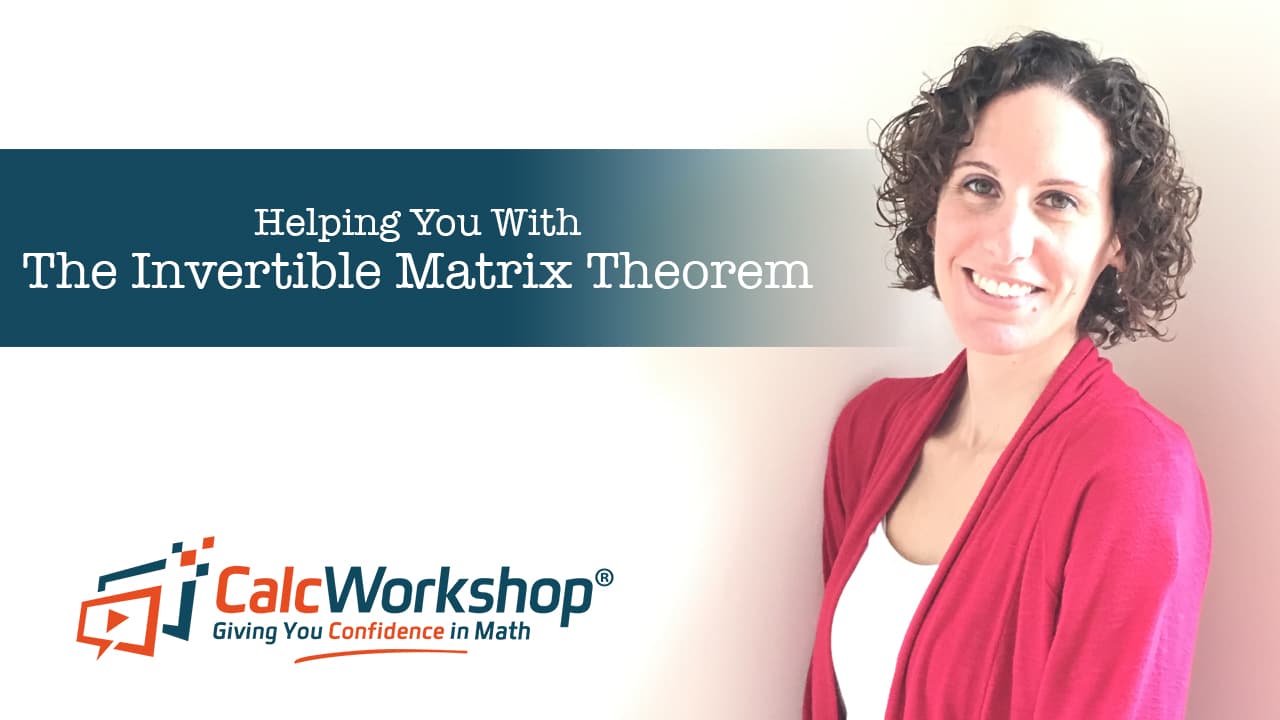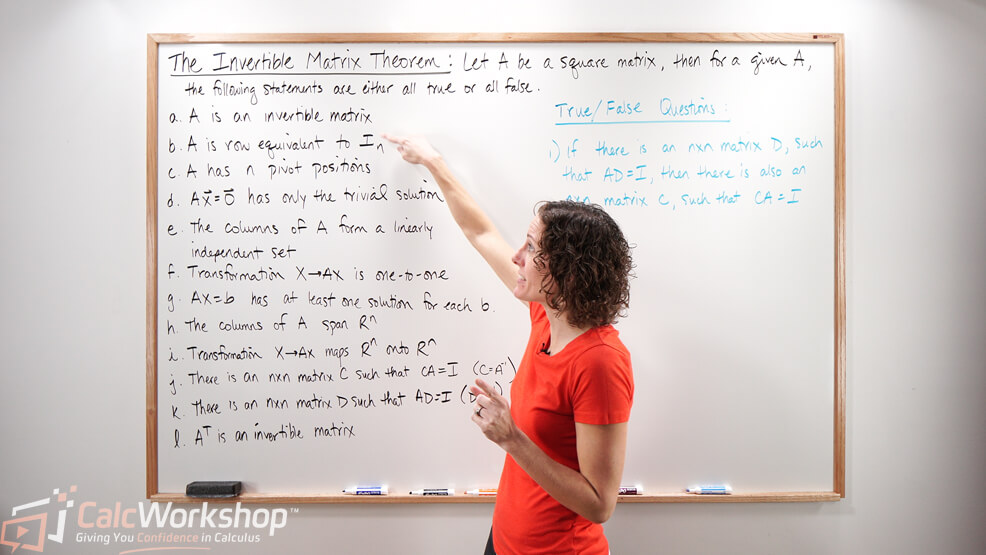Did you know there are two types of square matrices?

Jenn, Founder Calcworkshop®, 15+ Years Experience (Licensed & Certified Teacher)
Yep. There are invertible matrices and non-invertible matrices called singular matrices.
While singular matrices have their importance and place, invertible matrices draw our attention and focus.
Why?
Because, for lack of a better analogy, invertible matrices get to wield the power of the Invertible Matrix Theorem!
The Invertible Matrix Theorem
The invertible matrix theorem and its vast conditions are possibly one of the most important theorems in all of Linear Algebra.
Okay, so what is the invertible matrix theorem?
The Invertible Matrix Theorem states that if we let
- A has
- The equation
- The columns of
- The linear transformation
- The equation
- The columns of
- The linear transformation
- There is an
- There is an
Implications of the Invertible Matrix Theorem
So, if a matrix is invertible, then all the statements from the invertible matrix theorem are true. In other words, if one of the statements is true, then so are the others. And if the matrix is not invertible (singular), then all the statements of the invertible matrix theorem are false.
Additionally, it is essential to note that we will add to this list of equivalent statements in future lessons. However, this is definitely a solid list of conditions to get us started understanding and appreciating this important theorem. Alright, so let’s start putting this useful theorem to work.
Applying the Invertible Matrix Theorem
Suppose
What is matrix A?
Well, to isolate
Remember, when we multiply a number by its inverse it simplifies to 1. For example,
We are doing the same thing here. B times
And this is how we will isolate matrix A.
So, this means that if we multiply AB with the inverse of B, then we have matrix A! Okay, let’s get to it by finding B-inverse.
Now, let’s find the product of
Thus,
all by the power of invertible matrices!
The Invertible Matrix Theorem and Linear Transformations
Now, let’s see how the invertible matrix theorem helps us understand linear transformations.
So, if
Consequently, the linear transformation
Okay, but what does this mean?
It means that
Understanding Inverse Transformations
Suppose
Let’s use our knowledge of invertible matrices to show that
First, let’s write the standard matrix for
Next, we think back to the Invertible Matrix Theorem and recognize that if
So, all we have to do is find the inverse of
Therefore, we have shown that
or
See, not so bad, right?
Next Steps
In this video, you will:
- Examine the Invertible Matrix Theorem in detail
- Answer true-false questions and existence-uniqueness questions to ensure understanding of concepts and theory
- Learn how to determine if a matrix is invertible using as few steps or calculations as possible
- Compare Invertible Linear Transformations with your understanding of composite functions from Algebra 2 and Precalculus
Get ready for a fun learning experience, and let’s get started!
Video Tutorial w/ Full Lesson & Detailed Examples

Get access to all the courses and over 450 HD videos with your subscription
Monthly and Yearly Plans Available
Still wondering if CalcWorkshop is right for you?
Take a Tour and find out how a membership can take the struggle out of learning math.